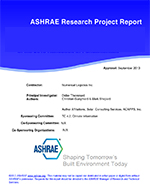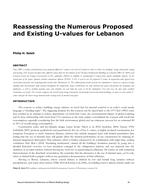Click here to purchase
Passive design is a fundamental building design paradigm that needs to be considered in the engineering of buildings of any scale, ranging from the smallhousing units to large commercial buildings, failing which important synergies with the site elements are lost. Therefore in the wake of finding solutions forclimate action, the built environment has a major role to play, both for climate change adaptation and mitigation, and passive design principles should beat the heart of these solutions. The use of simulations to advise building design has taken an increasingly important place due to the complexity of the factorsinfluencing desired targets such as thermal comfort, energy efficiency or even cost effectiveness of the measures. Although large projects can warrant allocatinga budget for performing building simulations to capture the specifics of the project in terms of the land plot geometry, building fabric and glazing types andproportions, building orientation and layout, the residential sector has received a different treatment altogether. Prescriptions have been provided for homesto integrate into the architecture, without any possibility to provide quantitative metrics on indoor environmental quality giben the absence of a bespokebuilding model. The 3×3 simulation model is proposed to provide a means to analyse passive measures for any scale of building while providing quantitativeresults on the desired targets. The 3×3 model has been applied to assess the efficacy of passive measures in the tropical context of Mauritius, which hassupported the prescription of measures for the residential sector based on scientific results, which have been correlated to responses received from householdsat representative locations in Mauritius. The innovative 3×3 simulation model was deemed suitable to investigate the complex heat transfer phenomenathrough the various building elements of a given space, and can be used for generating the needed data set to develop AI algorithms for predictive control ofindoor environments with respect to the ambient conditions.
Product Details
- Published:
- 2022
- Number of Pages:
- 9
- Units of Measure:
- Dual
- File Size:
- 1 file , 1.2 MB
- Product Code(s):
- D-ICEB22-10
- Note:
- This product is unavailable in Russia, Belarus


